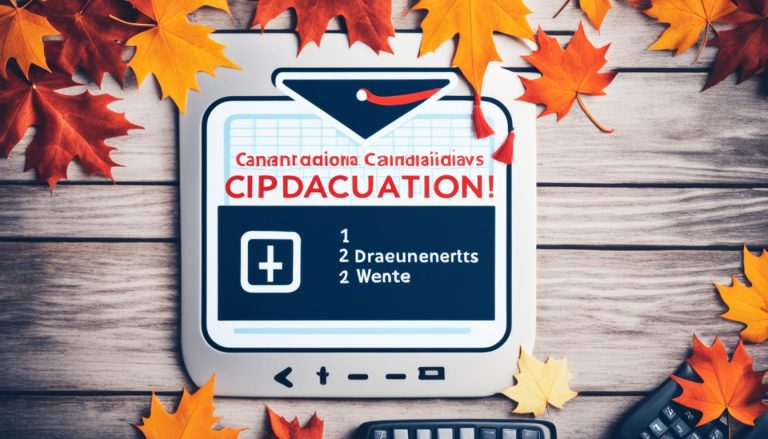Are you interested in a rewarding career that combines healthcare, science, and patient care? If so, you might be wondering how to become a pharmacist in Canada. Becoming a licensed pharmacist in Canada is a structured process involving both academic achievements and regulatory steps, but it offers a stable and respected profession with many opportunities for growth.
Whether you’re a Canadian student planning your future or an internationally educated pharmacist looking to practice in Canada, the pathway is clearly outlined but varies depending on your educational background.
From enrolling in an accredited Doctor of Pharmacy (PharmD) program to passing national exams and gaining practical experience, every step matters. Understanding the qualifications, licensing process, and expectations will help you navigate your journey successfully and avoid costly mistakes.
This comprehensive guide will walk you through every requirement and milestone, so you can confidently move forward on your path to becoming a registered pharmacist in Canada.
What Qualifications Do You Need to Become a Pharmacist in Canada?

To become a pharmacist in Canada, you must first meet the academic and professional standards required by pharmacy schools and provincial regulatory authorities.
The primary qualification is the completion of a Doctor of Pharmacy (PharmD) degree from a Canadian university accredited by the Canadian Council for Accreditation of Pharmacy Programs (CCAPP). However, there are some steps and requirements to fulfil before applying to a PharmD program.
Typically, Canadian students complete at least two years of undergraduate university courses in science-related fields. These courses must include subjects like biology, chemistry, calculus, and humanities or social sciences. You do not need to complete an entire bachelor’s degree, but the pre-requisite courses are non-negotiable for admission.
Required high school preparation includes:
- English
- Chemistry
- Biology
- Physics
- Advanced Math or Calculus
At the university level, the most common pre-PharmD subjects include:
- General Biology (1.0 FCE)
- General Chemistry (1.5 FCE)
- Calculus or Advanced Functions (1.0 FCE)
- Humanities or Social Sciences (1.0 FCE)
Once these requirements are fulfilled, you can apply for a PharmD program, which usually lasts four years. The curriculum includes classroom instruction and hands-on experience through rotations and placements. Canadian citizens and permanent residents are eligible to apply, but international students may have different conditions.
These qualifications ensure that you are academically prepared and capable of handling the demands of pharmacy practice. Completing these steps is the foundation of your journey towards becoming a licensed pharmacist.
How Do You Choose the Right Pharmacy School in Canada?
Choosing the right pharmacy school in Canada is a crucial step in your educational journey. There are 11 accredited pharmacy schools across Canada, and each offers unique features, program lengths, and co-op opportunities. Selecting the right institution can significantly impact your career prospects, hands-on experience, and professional development.
When choosing a pharmacy school, consider whether it is accredited by CCAPP. Accreditation ensures the school meets national standards and its graduates are eligible to proceed with licensure steps.
Factors to consider when selecting a pharmacy school:
- Program structure (traditional vs. co-op)
- Location and accessibility
- Tuition and financial aid options
- Clinical placement opportunities
- Admission requirements (GPA, courses, assessments)
- Reputation and success rate of graduates
Some universities, like the University of Waterloo, offer Canada’s only co-operative PharmD program, allowing students to gain paid work experience while studying. Others, like the University of Toronto, offer intensive three-year programs with a strong clinical focus.
Top pharmacy schools in Canada include:
- University of Waterloo
- University of Toronto
- University of British Columbia
- University of Alberta
- Dalhousie University
- Memorial University of Newfoundland
- Université Laval
- Université de Montréal
- University of Saskatchewan
- University of Manitoba
- University of Ottawa
Do your research into each program’s prerequisites, timelines, and student support services. A well-matched pharmacy school can greatly enhance your educational experience and increase your chances of success.
What Exams Are Required to Practice as a Pharmacist?

After earning your PharmD, the next major hurdle is passing a series of national and provincial exams. These exams are designed to test your academic knowledge, clinical judgment, and legal understanding, ensuring you’re fully prepared to practice safely and ethically in Canada.
What is the PEBC Exam?
The Pharmacy Examining Board of Canada (PEBC) is responsible for assessing the qualifications of pharmacy graduates. It administers the Evaluating Examination (for international candidates) and the Qualifying Examination (for both Canadian and international pharmacy graduates). Passing these exams is mandatory in all provinces and territories except Quebec, which uses its own licensing process.
How Do the MCQ and OSCE Exams Work?
The Qualifying Examination consists of two parts:
- Part I (MCQ): A computer-based test made up of multiple-choice questions that assess pharmaceutical knowledge and decision-making. It lasts about 4.5 hours and covers topics like pharmacology, patient safety, drug interactions, and clinical therapy.
- Part II (OSCE): The Objective Structured Clinical Examination involves rotating through 13 different stations, each simulating real-world pharmacy situations. You might be asked to counsel a patient, identify drug therapy problems, or review prescriptions.
These assessments ensure that you’re ready for direct patient care and understand the complexities of drug therapies.
Do All Provinces Require the Same Exams?
Most provinces and territories use the PEBC exams as part of their licensing process. However, some regions, such as Quebec, have their own systems. Regardless of the province, you’ll also need to pass a jurisprudence exam, which is tailored to each jurisdiction’s laws and regulations.
| Exam Type | Who Needs It? | Details |
| PEBC Evaluating Exam | International Graduates | Tests academic equivalency before qualifying exam |
| PEBC Qualifying Exam – Part I (MCQ) | All Graduates (except Quebec) | Multiple-choice knowledge assessment |
| PEBC Qualifying Exam – Part II (OSCE) | All Graduates (except Quebec) | Simulates real-world pharmacy situations |
| Jurisprudence Exam | All Candidates | Tests understanding of provincial pharmacy law |
Successfully passing these exams brings you one step closer to becoming a licensed pharmacist in Canada and ensures that you’re ready to provide safe, competent care.
What Is the Role of Practical Training in the Licensing Process?
Practical training is a vital part of becoming a pharmacist in Canada. It allows you to apply theoretical knowledge in real-world settings, develop communication skills, and build professional confidence under supervision.
Every province and territory has its own structured internship or practical training requirements, and this step is usually completed after the PEBC Qualifying Exams.
In most cases, you’ll need to complete a certain number of hours under the supervision of a licensed pharmacist. The goal is to ensure that you can interact with patients, interpret prescriptions accurately, and dispense medications responsibly.
Key components of practical training include:
- Supervised experience in a community or hospital pharmacy
- Exposure to medication dispensing systems
- Patient counselling and medication review
- Pharmacy operations and inventory control
- Ethical decision-making and documentation
This experience can take the form of an internship, co-op placement, or structured practical training program depending on your province. In provinces like Ontario, students often fulfill these hours during or after their PharmD studies.
Completing this stage not only satisfies regulatory requirements but also prepares you to function independently in a clinical environment.
What Is the Jurisprudence Exam and Why Is It Important?
The jurisprudence exam is designed to assess your understanding of the legal, ethical, and professional responsibilities of a pharmacist in your province or territory. It’s mandatory for all candidates, including those educated in Canada and international graduates.
Each province has its own version of the jurisprudence exam because pharmacy laws and regulations vary regionally. This test ensures that pharmacists know the rules around prescribing authority, record keeping, privacy laws, and professional conduct.
Topics often covered in the jurisprudence exam:
- Controlled substances and narcotic handling
- Pharmacy operations and licensing
- Privacy and confidentiality laws
- Scope of practice and prescribing guidelines
- Billing and insurance regulations
- Professional misconduct and complaint procedures
The format may include multiple-choice or scenario-based questions. It’s often taken after or alongside the PEBC Qualifying Exam and structured training. Some provinces, like British Columbia and Ontario, require the jurisprudence exam as a condition for internship registration.
Passing this exam confirms that you’re legally ready to provide pharmacy services safely and in compliance with provincial standards. It also reduces the risk of professional errors that could lead to disciplinary action or licence suspension.
How Do You Apply for a Pharmacy Licence in Your Province or Territory?

Once you’ve completed your academic education, passed the PEBC exams, undergone structured practical training, and passed the jurisprudence exam, your final step is applying for licensure through your province or territory’s pharmacy regulatory authority. This application process is mandatory before you can legally practise as a pharmacist in Canada.
Each province has its own regulatory authority, and while the core steps are similar, specific requirements may differ slightly based on jurisdiction. In general, licensure ensures that you meet the local practice standards and professional conduct expectations.
Typical steps in the licensure process include:
- Submitting an official application form to your provincial college of pharmacy
- Providing evidence of education and exam results
- Completing a criminal background check
- Paying licensing and registration fees
- Submitting proof of liability insurance (mandatory in most provinces)
- Participating in any required orientation or readiness assessments
Some provinces may require an additional practice assessment or interview to verify your clinical competency in real-time settings. You may also need to prove fluency in either English or French, depending on the province.
Once you are approved, you’ll receive your pharmacist licence, which must be renewed annually. Renewal often requires continuing professional development (CPD) activities and up-to-date certification records.
Obtaining your licence is the legal gateway to beginning your pharmacy career. It confirms your readiness to contribute to the Canadian healthcare system safely and effectively.
What’s the Process for International Pharmacy Graduates?
If you’re an internationally educated pharmacist (IEP or IPG), the process of becoming licensed in Canada is more complex but entirely achievable with proper guidance and preparation. The primary goal is to validate your education, language skills, and professional readiness according to Canadian standards.
Your first step is registering with Pharmacists Gateway Canada, a centralized national portal that provides guidance and collects essential documentation. Once registered, you’ll receive a NAPRA ID, which is required to proceed.
Steps for international pharmacy graduates include:
- Create a profile on Pharmacists Gateway Canada
- Submit academic transcripts for document evaluation by the PEBC
- Take the PEBC Evaluating Examination to assess the equivalency of your education
- Pass the PEBC Qualifying Exams (MCQ and OSCE)
- Prove language proficiency through approved English or French tests (like IELTS or TOEFL)
- Complete bridging programs, if required by your province
- Fulfil any structured practical training or internships as mandated locally
- Pass the jurisprudence exam in the province or territory of practice
- Apply for provincial licensure through the local regulatory body
The process usually takes between 2.5 to 3 years, and costs can range from $12,000 to $24,000, depending on the province and training needed.
Despite its challenges, this pathway provides international pharmacists the opportunity to build a stable and rewarding career in one of the world’s most respected healthcare systems.
Do You Need to Prove Language Proficiency?
Yes, demonstrating language proficiency is a mandatory part of the pharmacist licensure process, especially if you were educated outside of Canada or in a non-English or non-French environment. Strong communication skills are essential for pharmacists to interact with patients, healthcare professionals, and regulatory systems.
Language proficiency ensures that you can safely counsel patients, understand complex prescriptions, and document interactions accurately. Each province sets its own standards for accepted language tests, but most align with national benchmarks.
Commonly accepted language tests include:
- IELTS (Academic version)
- TOEFL iBT
- CanTEST
- MELAB
- TCF (for French)
Minimum scores often required:
- IELTS: Overall 7.0, with no band below 6.5
- TOEFL: Minimum 100 with high scores in speaking and writing
- CanTEST: 4.5 in each component
Even if English or French is your first language, some provinces may still request proof through documentation or interviews. Canadian graduates typically don’t need to take a language test, but this can depend on the university of origin and the province’s discretion. Meeting these standards confirms that you can communicate effectively, a skill that directly impacts patient safety and care quality.
What Career Paths Can You Pursue After Becoming a Licensed Pharmacist?

After obtaining your pharmacy licence in Canada, a wide range of career paths becomes available to you. Pharmacists are no longer limited to dispensing medications; they play critical roles in healthcare delivery, research, business, and education.
Most pharmacists start their careers in community or retail pharmacy, but many move into other specialized or leadership roles. With additional certifications, experience, or postgraduate training, you can expand your career into high-impact sectors.
Career options for licensed pharmacists include:
- Community Pharmacy: Working in drugstores, assisting patients with prescriptions, and offering consultations
- Hospital Pharmacy: Collaborating with medical teams to manage patient therapies
- Long-Term Care: Managing medication plans for elderly or chronically ill patients
- Pharmaceutical Industry: Roles in drug development, regulation, and marketing
- Regulatory Affairs: Working with provincial or national health agencies
- Academia and Research: Teaching pharmacy students or conducting clinical research
- Entrepreneurship: Opening your own pharmacy or healthcare business
- Military or Government Roles: Serving in the Canadian Armed Forces or public health departments
Pharmacists in Canada also now have prescriptive authority for minor ailments in some provinces, such as Ontario. This enhances your clinical responsibilities and gives you more autonomy in patient care. The pharmacy profession is dynamic and allows you to tailor your career according to your interests, lifestyle, and goals.
How Long Does the Entire Process Take?
The journey to becoming a licensed pharmacist in Canada can vary in length depending on your academic background and country of education. Generally, for students starting from high school in Canada, the process can take about 6 to 8 years. For internationally educated pharmacists, it usually takes 3 to 5 years to meet all licensure requirements.
Here’s a typical timeline for Canadian students:
- 2 years of undergraduate university studies
- 4 years in a PharmD program
- 6 to 12 months of practical training and exams
For international pharmacy graduates:
- Document evaluation and application (3–6 months)
- PEBC Evaluating Exam (6 months prep)
- PEBC Qualifying Exams (MCQ & OSCE) (1 year total prep)
- Bridging Program (if required, 6–12 months)
- Practical training and jurisprudence exam (6 months)
Factors that can affect the timeline:
- Time taken to pass exams
- Acceptance into bridging programs
- Provincial licensing and scheduling delays
- Availability of internship placements
The key to staying on track is proper planning, early preparation, and understanding each step thoroughly. While the path is long, it leads to a secure and fulfilling profession with national demand and competitive salaries.
Conclusion
Becoming a pharmacist in Canada is a step-by-step process that requires a combination of academic excellence, national and provincial exams, hands-on training, and a commitment to patient care. Whether you’re a student exploring future careers or an international graduate seeking Canadian licensure, the journey is both achievable and rewarding.
With the right planning, persistence, and support, you can confidently pursue a respected role in the healthcare sector. The pharmacy profession not only offers job security and flexibility but also provides meaningful opportunities to impact lives across communities.
By following the structured path outlined in this guide, you’re already one step closer to wearing that white coat and contributing to public health in Canada.
FAQs
What is the minimum GPA required to apply to pharmacy school in Canada?
Most Canadian pharmacy programs require a minimum GPA of 70 percent or a ‘B’ average. However, competitive applicants often have GPAs significantly higher than the minimum.
Can you become a pharmacist without a PharmD?
No, a Doctor of Pharmacy (PharmD) degree from an accredited Canadian university is a mandatory requirement for licensure. This ensures all pharmacists meet consistent national standards.
What is the difference between the evaluating and qualifying PEBC exams?
The evaluating exam assesses if an international degree is equivalent to Canadian standards. The qualifying exam tests practical and clinical knowledge needed for practice.
Can international students work while pursuing pharmacy licensing in Canada?
Yes, international students can work part-time if their visa allows. However, work cannot interfere with licensing steps such as bridging programs or internships.
Are there pharmacy residency programs in Canada?
Yes, postgraduate residency programs are available and often required for specialized hospital pharmacy roles. These are competitive and require application during the final year of PharmD.
How do I transfer my pharmacy licence between provinces?
You can transfer your licence through a process known as labour mobility, but some provinces may require an additional jurisprudence exam. Contact the new province’s regulatory authority for details.
What’s the job outlook for pharmacists in Canada over the next 10 years?
The demand for pharmacists is expected to remain stable, with increased roles in public health and prescribing. Aging populations and expanded scopes of practice support this growth.




